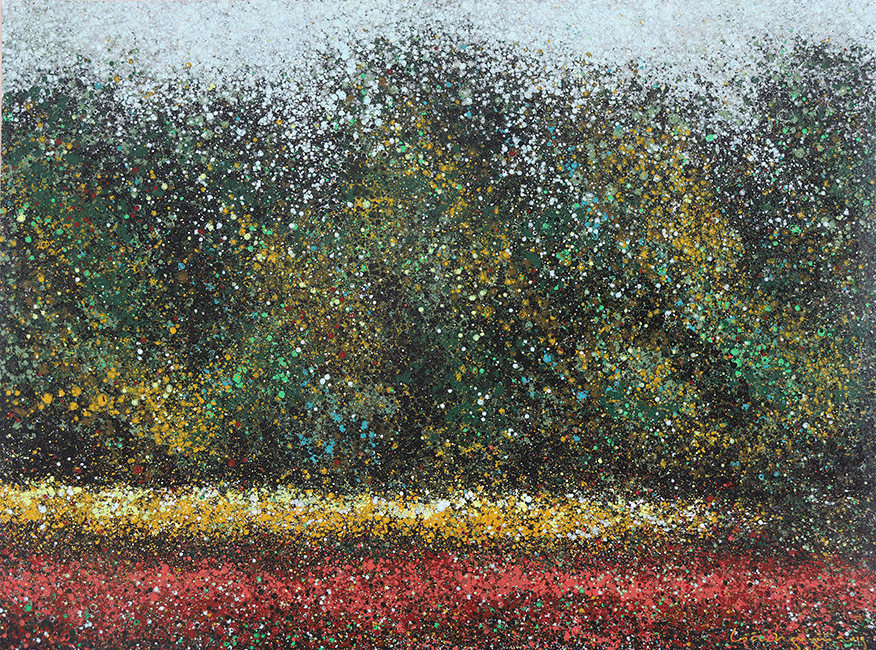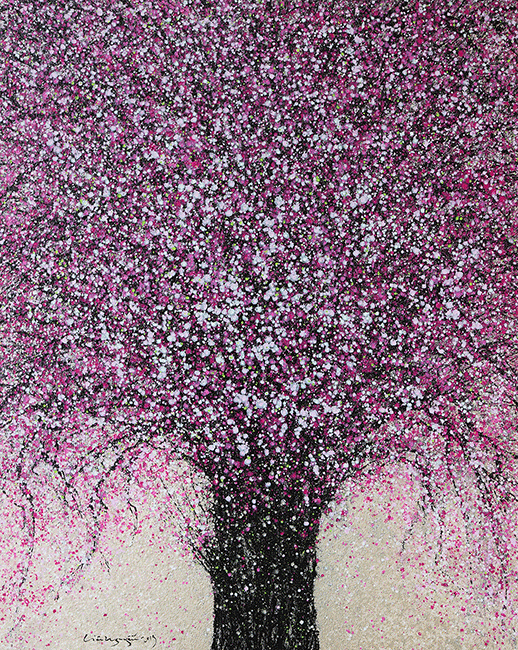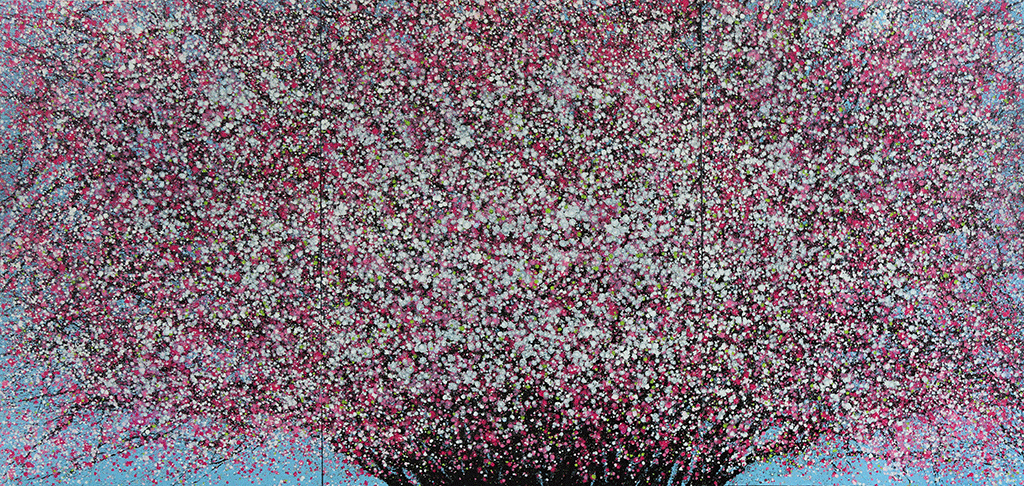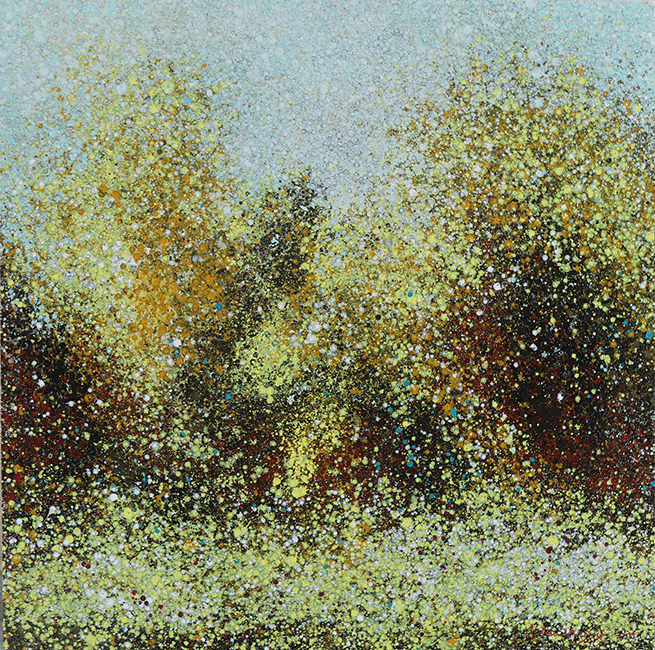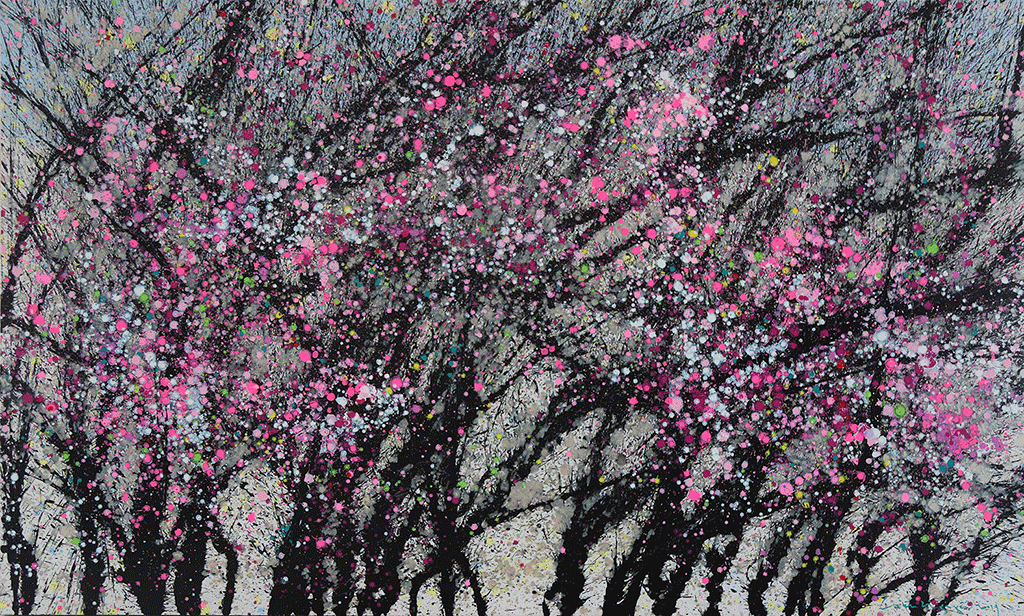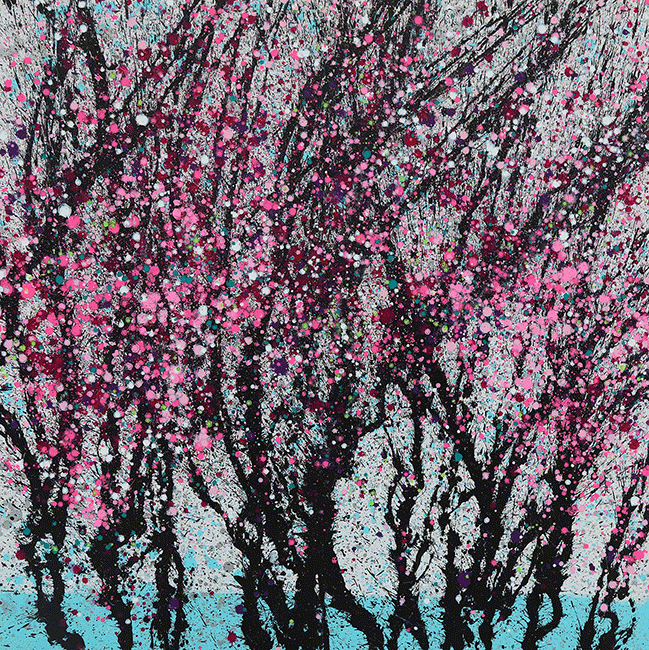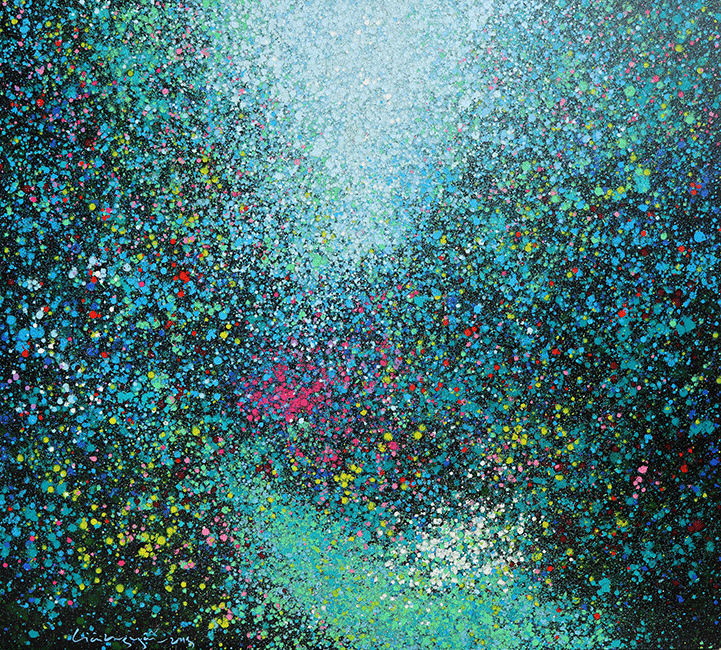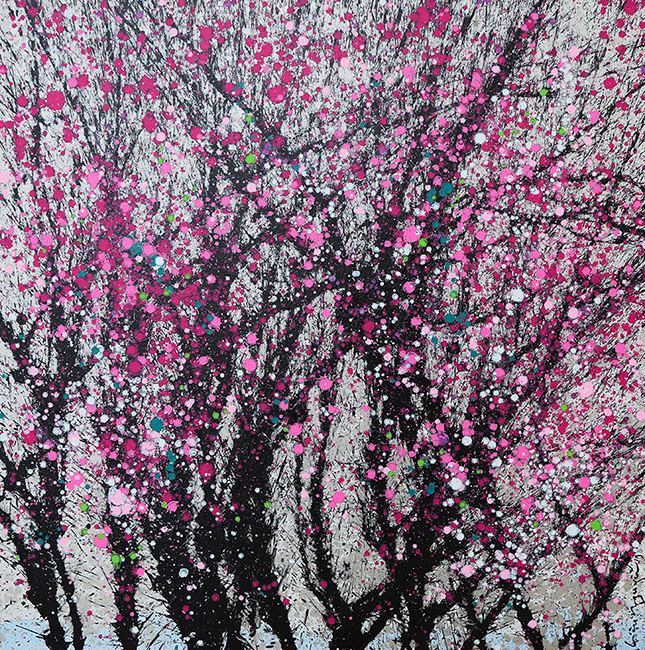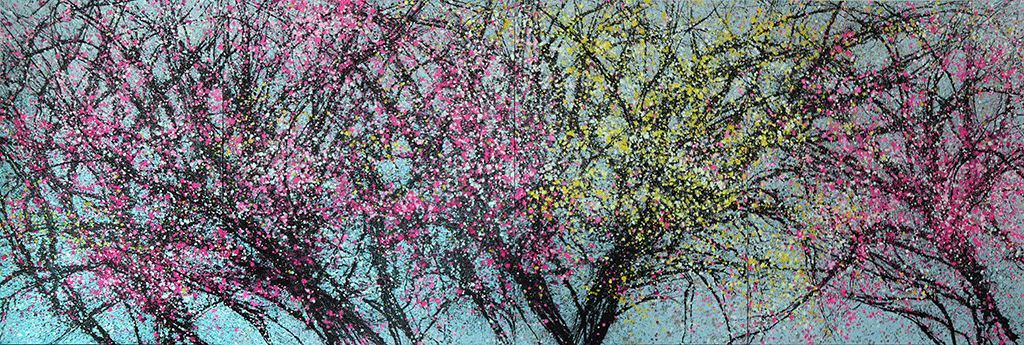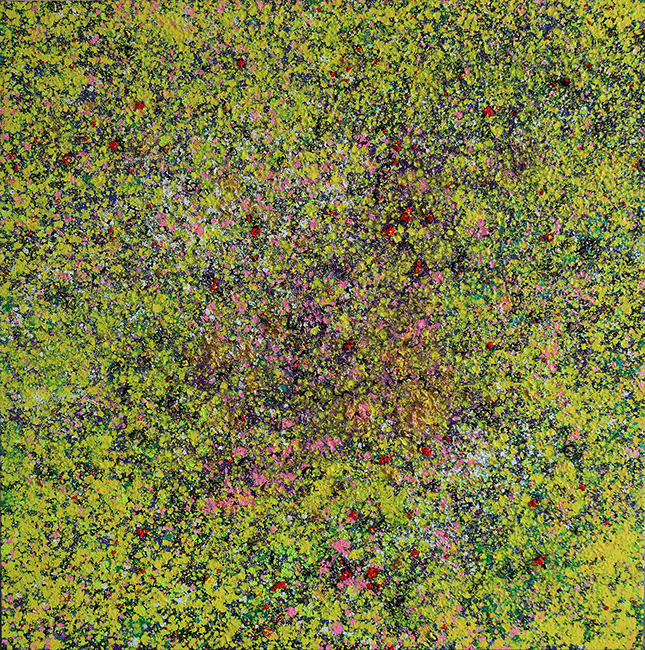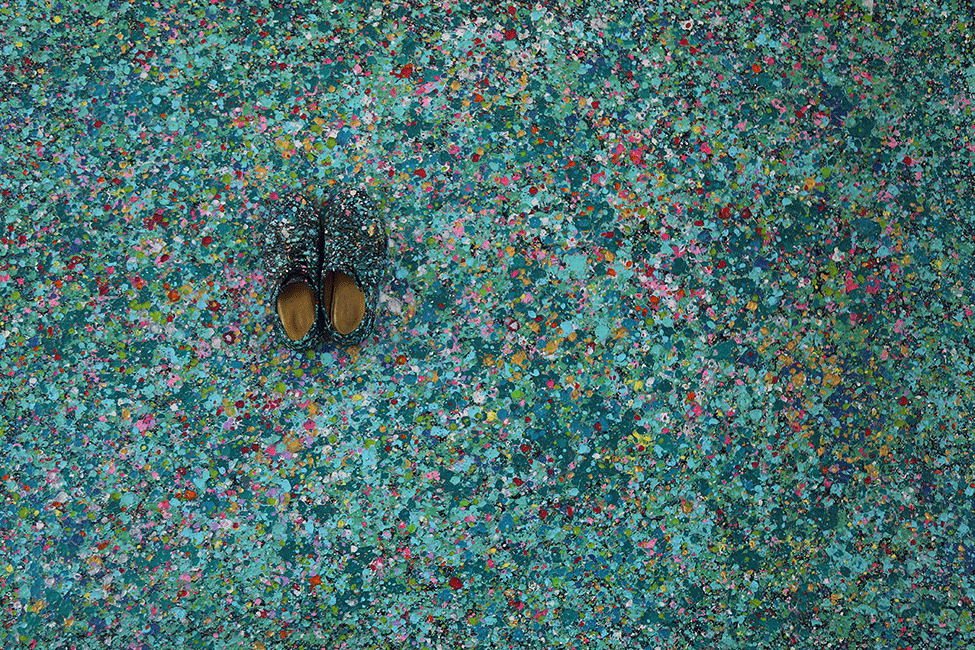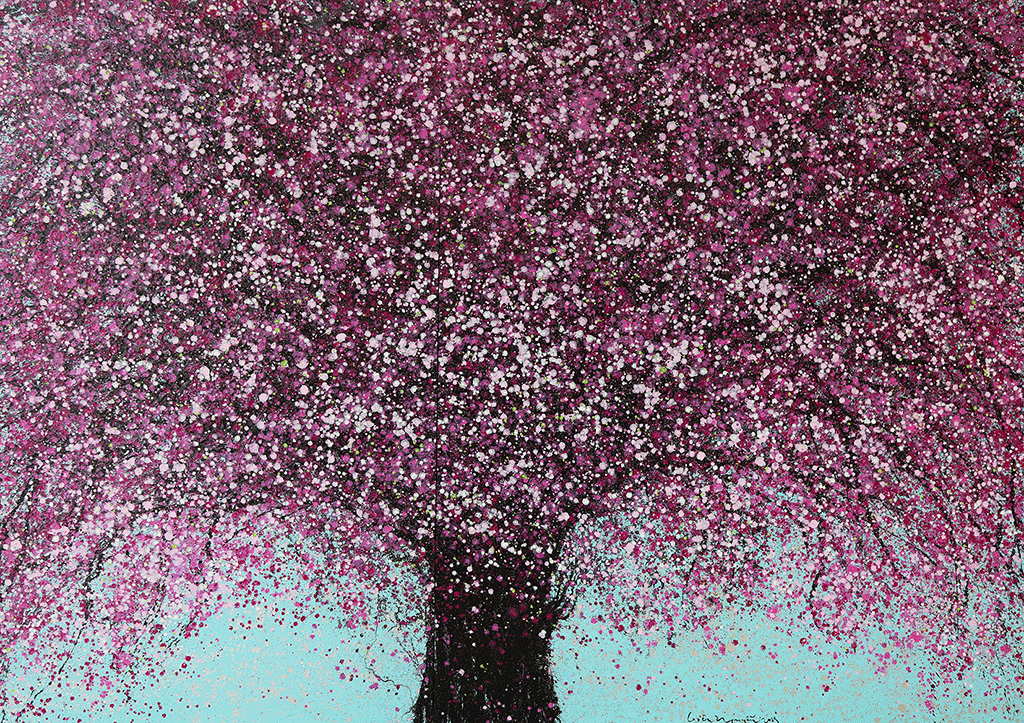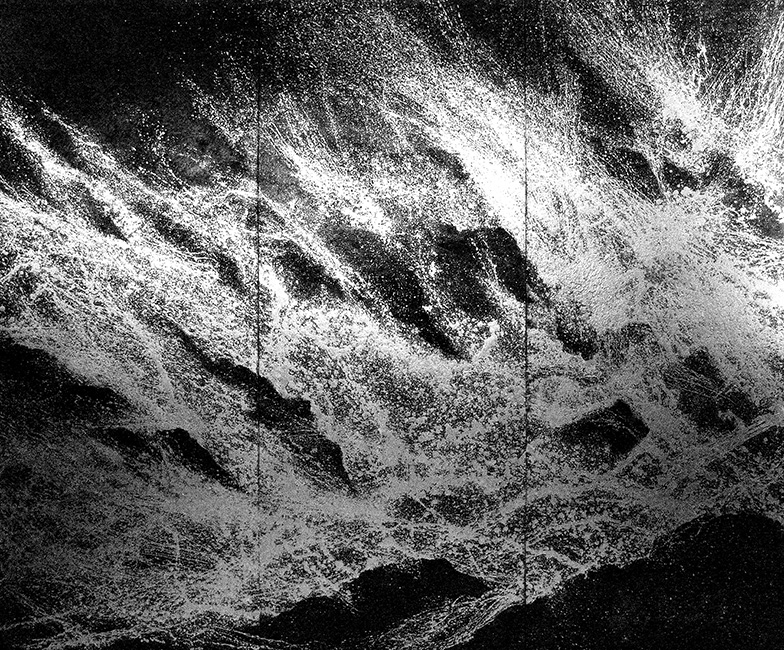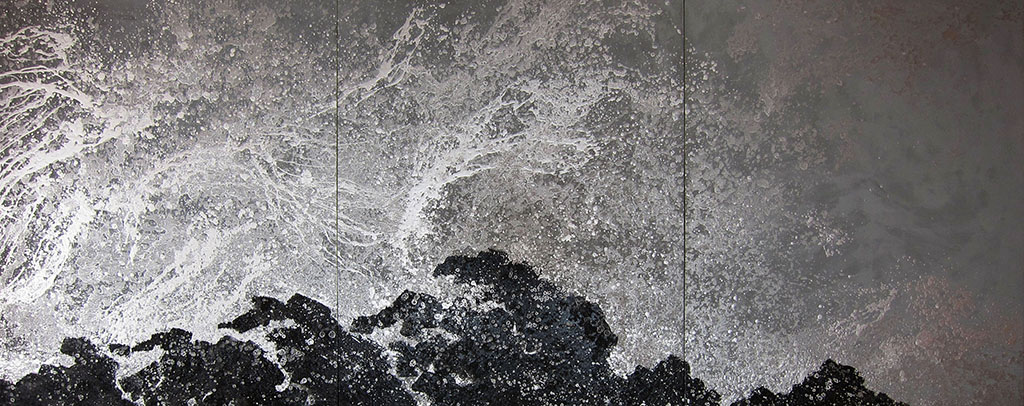Dancing with Cherry Blossoms
Opening reception: Friday, 30 August 2019, 6-9pm
30 August - 18 September 2019
When looking at Lieu Nguyen Huong Duongâs paintings over the past decade and a half, certain references and means of categorization come quickly to mind. Duong, when pressed, will invariably say that he is an âaction painter.â It is certainly obvious even to the uninitiated that his style of working mimics to a certain degree the way in which Jackson Pollock and other artists of that school painted â in Duongâs and Pollockâs specific cases with a canvas on the…
When looking at Lieu Nguyen Huong Duongâs paintings over the past decade and a half, certain references and means of categorization come quickly to mind. Duong, when pressed, will invariably say that he is an âaction painter.â It is certainly obvious even to the uninitiated that his style of working mimics to a certain degree the way in which Jackson Pollock and other artists of that school painted â in Duongâs and Pollockâs specific cases with a canvas on the…
When looking at Lieu Nguyen Huong Duong’s paintings over the past decade and a half, certain references and means of categorization come quickly to mind. Duong, when pressed, will invariably say that he is an “action painter.” It is certainly obvious even to the uninitiated that his style of working mimics to a certain degree the way in which Jackson Pollock and other artists of that school painted – in Duong’s and Pollock’s specific cases with a canvas on the floor and the artist stalking around and effectively creating from “within” the canvas. Rather than bringing a Pollockian sense of chaos to his work, however, Duong manages to maintain a level of control in his paintings that separates him from most of his action predecessors.
According to the renowned art critic Harold Rosenberg, the core essence of “action painting” is that “it is not a picture but an event.” Paraphrasing Rosenberg, the artist is not just a painter but a performer; the canvas is a recorder of artistic movement and energy and not just the setting on which the artist reproduces an image actual or imagined. There is an overwhelming wave of emotions strongly surging up inside that compels the action artist to create. The process is often fleeting and the artist has no choice but to hurry and seize that sudden creative impetus when it arrives. Duong affirms this emotional synthesis described by Rosenberg as closely mirroring his own process which he describes as the equivalent to being “in a state of ecstasy.”
Duong’s paintings, however, are not merely “active;” they also evince calculation, and, on occasion, even careful planning. Duong says, “I “act” using a combination of colors that is predetermined according to a specific theme in my head, and then I continuously work with the colors until I’m satisfied with the painting.” Although Duong’s paintings are unquestionably abstract, there is still a strong residue of figural representation in them. What makes Duong distinct is his combination of the pure spontaneity of action painting and his simultaneous adherence to formal art techniques. Ultimately, the impetus to classify is of more importance to art critics and collectors than it is to artists like Duong who are simply seeking to create something of beauty and personal meaning.
In choosing to title this exhibition of his works and the accompanying retrospective catalog Dancing with Cherry Blossoms, Duong leans into the motif for which he has become most well-known. Duong’s cherry blossom paintings are much loved by both the artist and his collectors around the world. Of his particular fascination Duong says, “I never tire of painting cherry blossoms because I love flowers and the cherry blossom is an especially beautiful type of flower that blossoms in the spring. It is a flower that is full of life and one that is uniquely suited to my style of painting. I have not yet managed to be truly satisfied with one of my cherry blossom paintings so I must keep painting them.”
Looking over his entire oeuvre, it is clear and Duong confirms that which animates him most and inspires his creativity is the glory of nature in all its riotous color. The natural beauty of flowers is magnified when it passes through Duong’s resplendent lens. Being a native of Tra Vinh in the Mekong Delta, Duong was born into a rich and luscious color palette. He found the imagery for his Wave paintings during a visit to the beaches at Phan Ri Cua. Duong also travels internationally in search of inspiration including a recent trip to Pakistan where views of mountain flowers resulted in a number of paintings in this collection which use colors and techniques not previously seen in his earlier work.
Beyond the technique and the categorizations, Duong’s paintings stand out in a unique way from the rest of Vietnamese contemporary art. They radiate a sense of feeling which draws the viewer into them. They emanate a sense of being that is of a piece with the peaceful and even languid nature of the artist himself. Duong’s color vortexes draw you into a world which walks a tightrope between true abstraction and an abstract way of viewing the world.
Craig Thomas and Uyen Nguyen Tu
Read more
Read less

